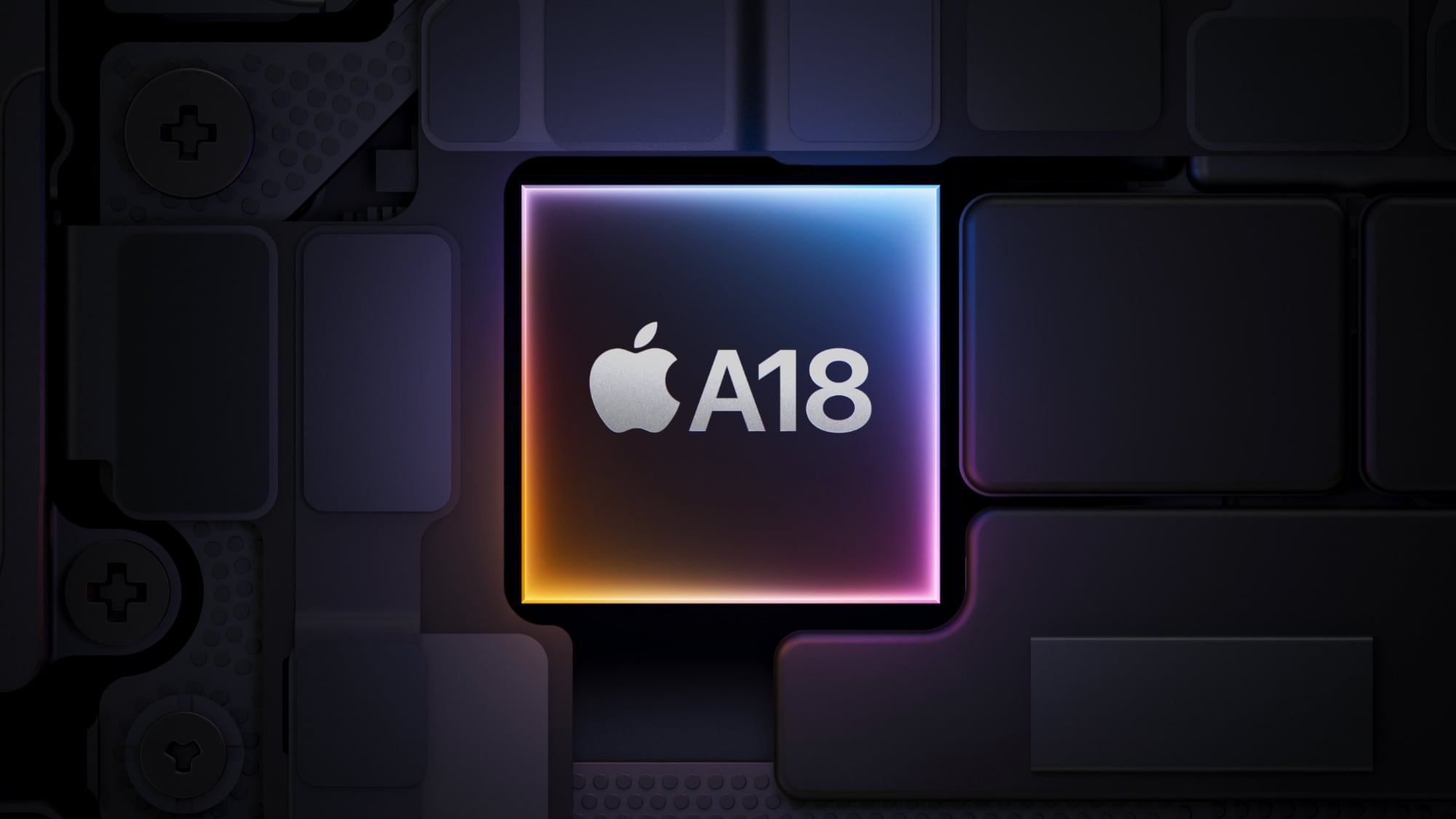
Apple introduced new second-generation 3-nanometer chips for both the iPhone 16 and the iPhone 16 Pro models, bringing notable improvements in performance. The iPhone 16 and 16 Plus have an A18 chip, while the iPhone 16 Pro and Pro Max have an A18 Pro chip.

The chips are similar, but there are some differences to be aware of, along with differences in the iPhone 16 and 16 Pro thermal design.
A18 and A18 Pro Shared Features
- Built on second-generation 3-nm process with smaller transistors.
- 6-core CPU with four performance cores and two efficiency cores.
- Upgraded 16-core Neural Engine optimized for running large generative models.
- Upgraded memory subsystem with 17 percent more memory bandwidth.
The A18 has a 5-core GPU rather than the 6-core GPU in the A18 Pro.
The iPhone 16 models have a new thermal design. Apple says that it updated the main logic board, centralizing chip placement and optimizing the surrounding architecture. There's a recycled aluminum substructure that dissipates heat for 30 percent higher sustained performance for gaming.
The A18 also adds hardware accelerated ray tracing, a feature that was available in the iPhone 15 Pro models with A17 Pro, but is new to the standard iPhone lineup. Hardware accelerated ray tracing is useful for gaming, and the iPhone 16 models can run all of the console-quality games that Apple touted for the iPhone 15 Pro models last year.
A18 Pro/iPhone 16 Pro Features
The A18 Pro has the same 6-core CPU as the A18, as well as the same Neural Engine, but it has one more GPU core for a 6-core GPU instead of a 5-core GPU.
According to Apple, the iPhone 16 Pro maximizes thermal capacity with a machined chassis that uses 100 percent recycled aluminum. It is bonded to the titanium frame using solid state diffusion, and it is combined with a graphite clad aluminum substructure. The new thermal architecture enables a 20 percent improvement in sustained gaming performance compared to the A17 Pro.
A18 Performance
Compared to the A16 Bionic chip, the A18's CPU is 30 percent faster, and it offers the same performance while using 30 percent less power.
The GPU is 40 percent faster than the A16 Bionic GPU, and it is also more efficient. It offers the same performance using 35% less power.
The new Neural Engine is 2x faster for machine learning than the Neural Engine in the A16 Bionic chip.
A18 Pro Performance
The 6-core A18 Pro CPU is 15 percent faster than the A17 Pro CPU, and it delivers the same performance using 20 percent less power. Apple says that it is the fastest CPU in any smartphone, with next-generation ML accelerators that are directly programmable for high-efficiency, high throughput and low latency computations.
The 6-core GPU is 20 percent faster than the GPU in the A17 Pro, and hardware accelerated ray tracing is 2x faster.
The upgraded Neural Engine is faster and more efficient than the Neural Engine in the A17 Pro. Apple says that Apple Intelligence features run 15 percent faster on the A18 Pro than the A17 Pro.
There is a new advanced display engine for ProMotion, a new video encoder, and a new image signal processor. Combined, they process twice the amount of data for fast video encoding and improved efficiency.
Article Link: A18 vs. A18 Pro: What's the Difference?
- Article Link
- https://www.macrumors.com/2024/09/10/a18-vs-a18-pro/
Last edited:



